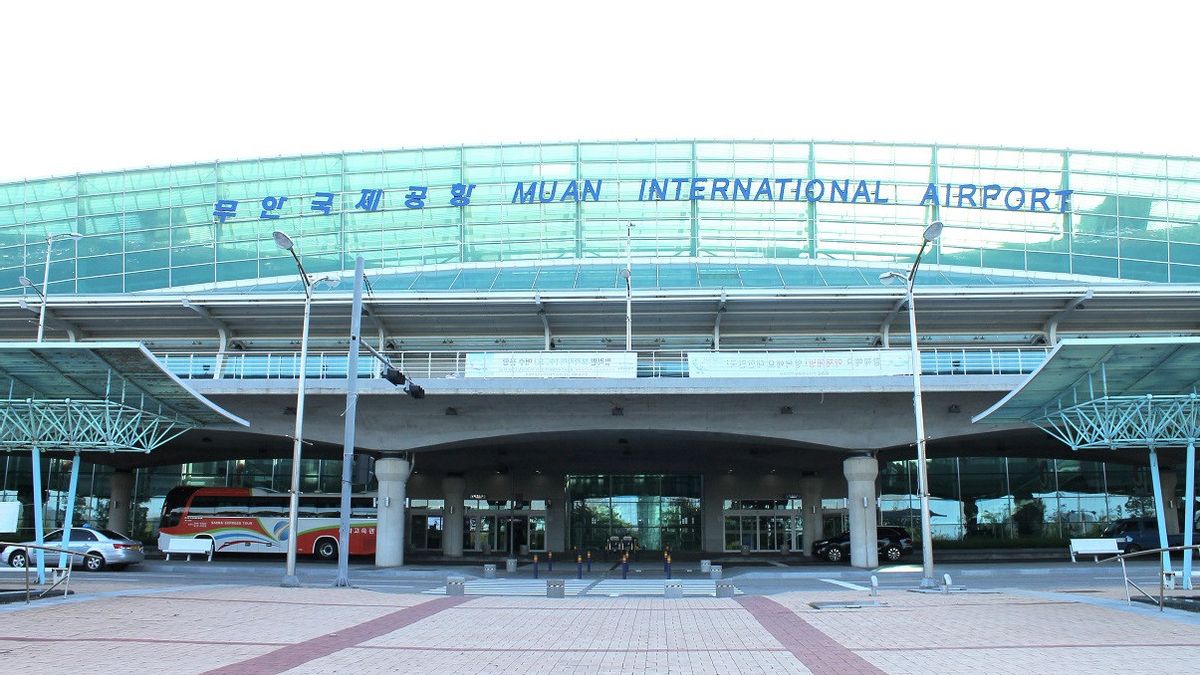JAKARTA - Muan International Airport, South Korea has the highest bird attack rate among the country's regional airports, although not all collisions with birds caused damage.
The Boeing 737-800 aircraft belonging to Jeju Air airline with flight number 7C2216 and registration of HL8088 from Suvarnabhumi International Airport, Thailand had a fatal accident while landing at Muan International Airport, South Korea on December 29.
The plane carrying 175 passengers and six crew members on the flight turned into fireball after making an emergency landing and hitting the wall. Only two crew members survived the incident.
The airport is known to have the highest bird attack rate among 14 regional airports in Korea, according to an opposition lawmaker on Monday, quoted by The Korea Times December 30.
The cause of the deadly accident is currently associated with a bird attack, while authorities are conducting an investigation into the exact cause.
Concerns over bird strikes have increased since the initial construction of the airport in Muan, South Jeolla Province, because the area located near the country's west coast has vast plains and mudlands that attract many migrant birds.
Korean Airports Corp. data submitted to MP Lee Yeon-hee from the main opposition of the Democratic Party of Korea stated that a total of 559 bird attack incidents occurred at 14 regional airports managed by the state-owned company from 2019 to August this year.
Gimhae International Airport has the highest number of bird collision incidents, namely 147 incidents, followed by Gimpo (140), Jeju (19), Daegu (38) and Cheongju (33).
Muan International Airport has only 10 bird collisions. However, if you consider the rate of incidence relative to the total number of flights operated, the airport has the highest incidence rate among 14 airports.
From January 2019 to August 2024, there were 11,004 flights operated in Muan, with a bird collision rate of 0.09 percent.
In comparison, Gimhae Airport, which experienced the highest number of bird collisions, had a lower incidence rate of 0.03 percent when considering the number of flights, and was ranked eighth among 14 airports.
Meanwhile, Jeju Airport, with the highest number of flights, namely 926,699, and Gimpo airport, with 757,479 flights, has a lower incidence rate of 0.01 percent and 0.02 percent, respectively.
However, not all bird collisions caused damage. Of the 559 incidents, only 20 were classified as causing damage, meaning that around 3.58 percent resulted in plane damage.
However, bird collisions are still considered a major safety threat for aircraft.
According to a report by the Korean Institute of Environment, both airports and birds have the same flight characteristics, meaning that areas that are most suitable for airports often overlap with ideal areas for bird habitat.
Professor Lee Geun-young of Korea's National Transportation University, said, "The airport is usually built in unrestrained areas and minimal noise disturbances, which is why airports are often located along the coastline, and of course, birds are found in this area."
On the other hand, experts note, it is not appropriate to think that Muan Airport is located in an area with an unusually high number of migrant birds, considering that Incheon International Airport is built on a recrelamated tidal plateau that also functions as a habitat for migrant birds.
In addition, the airports of Gimpo and Gimhae are located near the area.
"It is inappropriate to say that the airport in Muan is very vulnerable to bird strikes. Bird attacks can occur at any airport," Lee said.
VOIR éGALEMENT:
It is known that bird attack incidents are not only a concern in Korea but also around the world.
According to the International Civil Aviation Organization, a total of 97,751 bird attacks occurred in 196 countries from 2008 to 2015. This means around 14,000 incidents per year.
Although airports, both domestically and internationally, have implemented measures such as radar detection systems, drones to expel birds and habitat management, concerns remain because this solution may not fully address the causes of the problem.
This has led to the emergence of calls for comprehensive measures, including research on bird ecosystems and increased airport environmental management, to effectively reduce the risk of bird attack.
The English, Chinese, Japanese, Arabic, and French versions are automatically generated by the AI. So there may still be inaccuracies in translating, please always see Indonesian as our main language. (system supported by DigitalSiber.id)

















